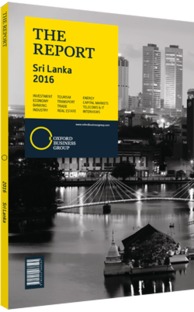Debates in Sri Lanka continue over banking sector consolidation
The Sri Lankan banking sector is in some ways fragmented for a country of 20.5m people, and in need of consolidation, but there is little agreement on how that should be done. In total, the country has 25 licensed commercial banks and 56 non-bank financial institutions (NBFI). And while the vast majority of these enterprises are healthy, some of the smaller institutions may be struggling and consolidation could be better for the country.
Consolidation Reconsideration
The Central Bank of Sri Lanka originally published a master plan on consolidation in early 2014, which provided a vision for the future of the sector and step-by-step instructions for achieving it. The total number of banks was to be reduced as a result of mergers, and a major development bank was to be formed. Following the 2015 election the new government pulled back. In May 2015 the central bank released a statement to local daily Eye Sri Lanka that consolidation was still a long-term policy, although the new government favoured the process being driven by market forces.
The IMF also expressed reservations about consolidation in its 2014 Article IV consultation for Sri Lanka. It worried that the merged institutions would be prevented from making the necessary adjustments to fully benefit from consolidation. It also worried about excessive risk being taken post-consolidation and noted that “larger institutions can pose greater systemic risks”. It instead recommended putting in place additional buffers to strengthen the balance sheets of newly merged institutions.
Halt Called
As the new government decided to put a halt to consolidation of the financial sector in early 2015, it has adopted the stance that any consolidation would have to take place at a later time. The NDB Bank-DFCC Bank merger was later called off in May 2015, despite a memorandum of understanding that was signed in 2014. The two banks had started to coordinate their businesses. However, the new government opposed the deal and cancelled it, as the state controls one-third of each banks’ shares.
One merger was able to move forward, however, in September 2015, when DFCC Bank and DFCC Vardhana Bank received shareholder approval for a merger. The deal had been in the works for four years and DFCC Vardhana Bank was already in effect a subsidiary of DFCC Bank. The deal most importantly puts all management and brand identity under one roof, making DFCC Bank a full-fledged commercial bank, as well as a development bank. There are no other potential mergers for formal banks expected in 2016.
One factor complicating potential consolidations is the large role that state-owned banks play in the sector. These banks have traditionally lent to loss-making state-owned enterprises, and therefore remain a key government tool and are typically excluded from consolidation discussions. Furthermore, the general public has generally been opposed to the privatisation of any state enterprise, including financial institutions.
Overbanked
There is still some difference of opinion over consolidation. While some say 25 licenced institutions for a country of 20.5m is too many, others point to untapped potential outside of Sri Lanka’s Western Province. “While it could be argued that Sri Lanka is overbanked in the Western Province, this is not the case for the country as a whole,” Aravinda Perera, managing director of Sampath Bank, told OBG. “Many of our new branches outside of Colombo break even in as little time as six months.” While Sri Lanka’s overall financial inclusion measure is around 68%, according to the Asian Development Banking Institute, the International Fund for Agricultural Development estimates access to credit in rural communities at around 18%. There has historically been a strong mismatch between rural depositors and urban lending, illustrated by the movement around thrift and credit cooperatives. This all suggests there is some room for further, more organic, growth.
You have reached the limit of premium articles you can view for free.
Choose from the options below to purchase print or digital editions of our Reports. You can also purchase a website subscription giving you unlimited access to all of our Reports online for 12 months.
If you have already purchased this Report or have a website subscription, please login to continue.

